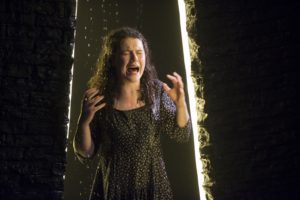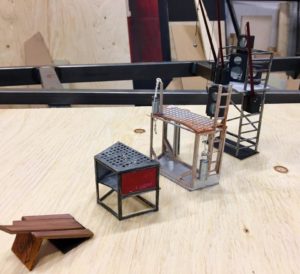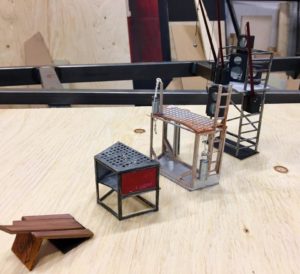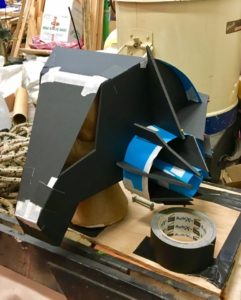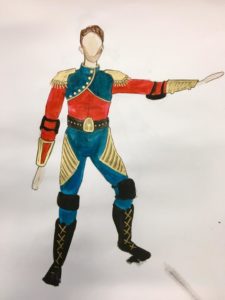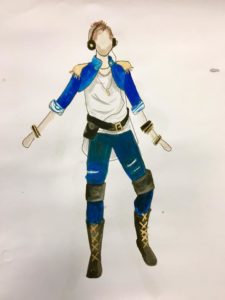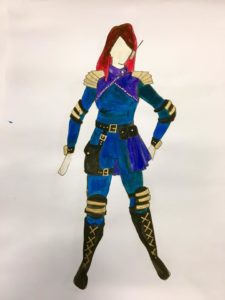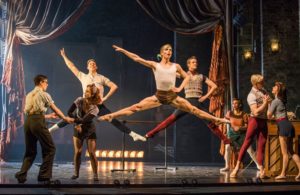
 (4 / 5)
(4 / 5)
I don’t know very much about ballet. In fact, this was my first time ever seeing one. I was completely swept away by the beauty and the elegance of it.
I did manage to follow the story. Although at first I was definitely a little lost. I did pick up the conflict between choosing passion or choosing love, and the eventual consequences that come to light as a result of the character’s decisions.
The dancing was gorgeous. Every single person on stage managed to look beyond elegant, and way beyond beautiful. The music alongside was amazing to see. Everything was so in sync and perfectly aligned, like the cat wasn’t well-practiced, but more like dancing to it was intrinsically within them and not something they had to even think twice about. Like I said, I don’t know very much about ballet. My eyes aren’t critical to the specifics of the dances, but I was unaware of mistakes and critiques in a borderline blissful way. I enjoyed something pretty and stunning. And I really, really liked it.
The setting was cunning, and extremely clever. There were things I didn’t expect to be used at all – like shadows, or smoke, the front of a train, audio of clapping – which I did mistake for the audience – and so forth. The ideas behind the production seemed big and well-thought out. Something daring but equally safe.
Category Archives: Theatre
Get the Chance announced as runners up in the Celebrating Diversity Award at this years Epic Awards

Get the Chance have been announced as runners up in the Celebrating Diversity Award at the 2017 Epic Awards organised by Voluntary Arts. The ceremony took place on Sunday the 19th March at the Sage Gateshead as part of BBC Radio 3’s Free Thinking Festival.
The Epic Awards were set up in 2010 by Voluntary Arts, an organisation that works across the UK and Republic of Ireland to promote participation in creative cultural activities. They celebrate the amazing contribution voluntary-led creative groups make to their communities.
https://www.voluntaryarts.org/epic-awards
The Celebrating Diversity Award is selected from across the full shortlist of 32 groups by a panel of judges representing teams in each nation. This award celebrates groups that have taken an innovative approach to highlighting the positive effects that come from living in a diverse society and is something that is central to the work that Voluntary Arts does all year round. Get the Chance were unanimously praised by the Epic Awards judges for
“The project’s unique approach to encouraging a diversity of voices”
Guy O’Donnell, Director of Get the Chance said;
“Get the Chance is honoured to be selected as runners up in the Celebrating Diversity Award. We strive to reflect the diverse nature of society in our voluntary membership. We learn from our team about barriers to sport and cultural provision and seek to work together to provide responses which are representative of all citizens in the UK.”
https://www.voluntaryarts.org/epic-awards-2017-winners
Membership of Get the Chance is free for further details please contact Guy O’Donnell, Director of Get the Chance
getthechance1@gmail.com
getthechance.wales
Review, Castle Rock, Massive Owl, Battersea Arts Centre by Hannah Goslin
Back at the Battersea Arts Centre, it seems with their jam packed season, they may as well provide a bed for me! A busy season is always fantastic with the different art that is created and performed here.
The company Massive Owl have travelled from Bristol for their one night show Castle Rock, based upon the Stephen King novella The Body and the 1986 film Stand By Me. We see the character of Ray and his enthusiasm for boxing but with the need to feel invincible. This narrative evokes a technical and physical abstract show showcasing the stage in his life and events that pass.
However, I came away not being a huge fan. The performance was at one, slow pace for the hour duration, feeling a lot longer, and not in a positive way. I kept waiting for something to happen, to get fast paced, to change the dynamics, a shock twist but nothing did. Arguably there was a small crescendo nearer the end but it felt displaced.
Technically – the use of projection, microphones and a loop peddle was interesting and added some interest to the stage presence. Not to rely on prerecording always shows a new talent to a production.
Majority of the production saw physical theatre, which I’m always a fan of. And you could see what they were trying to achieve but unfortunately it just did not hit the peak. While what was enjoyable was a little bit of comedy from the character of Ray from his dialogue which was witty without needing a huge monologue to get there. He had a twinkle in his eye that felt could have been harnessed more.
Castle Rock felt very much still in a scratch phase and with guidance needed to hone what the company wanted to achieve. However, any artist can see the hard work and direction they wanted to go and that in itself is something to commend.
 (2 / 5)
(2 / 5)
Review ‘Seanmhair’ The Other Room by Kiera Sikora
Review Gaslight, New Theatre, Cardiff by Jane Bissett
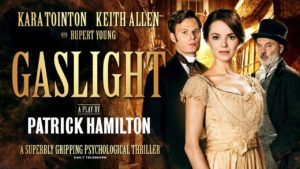
 (4 / 5)
(4 / 5)
Gaslight is a psychological thriller and focuses on the behaviour and sanity of Mrs Bella Manningham. Jack Manningham, is a subtle and clever manipulator who is controlling his wife by questioning her mental stability Indeed it is he who has engineered her current fragile state of mind and preys on her insecurities using the knowledge that she is haunted by the facts that her own mother had what was termed a ‘weakness of mind’ and ended her days in the ‘mad house’. It is clear from the opening scene that she is a woman who is living with a roller coster of emotions, her behaviour is constantly being questioned by her husband.
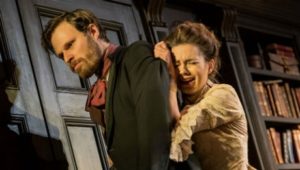
Whilst most evenings Jack Manningham is out pursuing his own ‘interests’ Bella is left alone in the house. Lonely and fearful and with items mysteriously being removed for which there is no explanation, she believes that there is someone else in the house. The dimming of the gaslight and footsteps from the rooms above at the top of the house, which her husband insists is not to be entered by any of the household and the doors remain locked, only serves to heighten her fear and anxiety.
Bella’s eventual salvation comes in the form of a detective, Rough, who has an ongoing interest in both Bella’s husband and the house in which they now live. With the aid of Bella’s maid, Elizabeth, Rough visits the house to investigate the unexplained happenings, discover the truth and save Bella from both insanity and her husband.
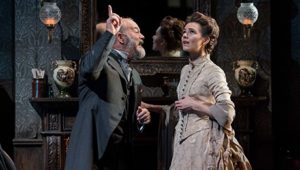
Rupert Young’s portrayal of Jack Manningham is skilful and disturbing. From the moment we first see him with his wife, the hairs on the back of the neck stand up. Jack clearly has an agenda in which his wife no longer serves a useful purpose so he plans to be rid of her. Young’s skill and ability to transform from a caring and compassionate husband to a calculating and manipulating bully make for uncomfortable viewing as he plays on his wife’s insecurities and her fear for her own state of mind.
As a cad and a rouge Young’s performance was confident and calculating. His stage presence and arrogant posture made his character believable and that as a man living in a male dominated society he could do what ever he wanted without reproach.
In contrast, Keith Allen, the man who we remember most in the mad and bad roles gave us a wonderful performance as the seasoned detective Rough. He brought the character alive from the moment he sets foot onto the stage, with a commanding confidence that makes the audience warm to Rough immediately. His delivery of Rough’s humour engaged the audience and his on-stage presence brought the play to life. During a scene when Jack Manningham return home early and unexpected there is almost a hint of a farce as Rough hides in a dressing room and just for a few moments we almost forget the dark subject of the play. Allen outstanding characterisation gives us a view into the compassionate and understanding side of Rough’s character as he endeavours to uphold justice and save Bella from a situation in which she has no control.
The play was staged on a single set, the drawing room of the house, which was designed and lit beautifully creating a style of Victorian elegance which was in keeping with story telling. There was a particular attention to the lighting as the name of the play would suggest, Gaslight, and these were given by two elegant lights either side of a large over mantle mirror which also gave an additional perspective during the scenes where Jack Manningham was addressing his wife as his reflection could be clearly seen although his back was to the audience. The atmosphere of the set was also enhanced by the use of lighting outside the room, which we were to believe was from the street outside, casting shadows of the players against the back drop of the drawing room doors, and also from what has to be the most realistic fire I have ever seen on a stage.
The costumes were as expected of the period in which the play was set and gave an overall feel of authenticity and drama which followed throughout the performance.
The play is a tale of crime and domestic abuse. Jack Manningham believes in ultimate power and control over his wife. His behaviour is now recognised by society and the law as what is now referred to as ‘coercive control’. When Rough suggests to Bella that her husband is not all he seems and is creating the problems she now faces, she is resistant. Clearly a woman of low self-esteem she clings to what she knows, her role as the loyal wife to a man who loves and protects her rather that being able to accept that truth of the situation unfolding around her. Her need to be loved blinds her to the realisation of what her husband is capable until the end. It is only the maid, Elizabeth, who sees Jack Manningham for who he really is and it is her intervention that draws the story out to a successful conclusion.
An Interview with lecturer, artist and designer Becky Davies

Hi Becky great to meet you, can you give our readers some background information on yourself please?
Currently, my work involves three core roles. I’m a freelance Set and Costume Designer for Theatre and Performance, I am an Artist who mainly produces artwork via commission, and I am a part-time Senior Lecturer on the BA(Hons) Creative and Therapeutic Arts course. I am also an Associate Artist of Taking Flight Theatre Company (who produce accessible and inclusive performance), and a resident designer for new musical theatre company, Leeway Productions.
http://www.beckydavies-theatredesigner-artist.com/about
So what got you interested in the arts ?
It may sound a cliché (but it is the absolute truth!). I was obsessed with drawing and painting from as soon as I could hold a pencil. This was my absolute first love and my way of telling stories and inventing worlds. I have always had a vivid imagination and I used to routinely dress up in elaborate costumes and build cities out of cardboard, towels, sheets, rope, chairs and pegs, whatever was available.
I was very lucky as I was encouraged by my parents and teachers to pursue my passion and follow a path towards a creative career. I had a romantic idea that I would end up as a Parisian Bohemian in an attic studio in Montmartre! To earn money while at school and then university, I facilitated art workshops in holiday playschemes for a Welsh language charity from the age of 15.
By the time I had reached Atlantic College, I was making wearable sculpture in my art lessons and I thought I was going to go into fashion, or a Foundation Art course if all else failed. I went round all of the University Open Days, and the atmosphere everywhere I went was not the right fit for me. I was more taken by the prosthetics department in the floor above the fashion department when I went to an Open Day in London which should have told me something!
It wasn’t until the Royal Welsh College of Music and Drama toured their annual puppetry performance to Atlantic College that I met Christine Marfleet (or ‘Marf’ to most of us RWCMD alumni) that I knew I had to go to an Open Day for what was then called the BA(Hons) Theatre Design course. I saw a room crammed with tiny, lit models for opera productions, a gloriously messy scenic painting workshop and beautiful garments being embellished in the sewing rooms – I was totally sold! It was RWCMD or nothing for me by that point, and I was over the moon when I was accepted. Everything moved at lightening speed from that point onwards.
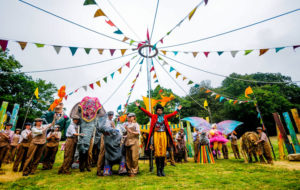
RWCMD Annual Puppetry Performance
You are a visual artist as well as a theatre designer. Do the skills required to work in these art forms relate to each other?
A lot of my making skills and language of creative expression came from my training as a Theatre Designer. At the start of my Master of Fine Art course at Cardiff School of Art and Design, I could make an installation art piece or a sculpture pretty much exactly as I had planned it. I was used to being resourceful, problem solving and making under pressure. However, this foxed my Fine Art lecturers quite a bit as my process was very different from a Fine Art process. I very quickly realised that I needed to begin to discover what my work was about at this point through a more unpredictable process, to use this opportunity to explore not planning for an end product. As a designer, I can be playful in my preparatory model boxes, drawing etc., but as an artist, I started to push myself to play through the entire process of making with no pre-defined end product. This created an interesting tension and challenged me in a whole different way. I am very grateful to have explored the distinction between these two roles as a creative practitioner at that point. I graduated feeling confident in how I work.
As an associate artist of accessible and inclusive theatre company, Taking Flight, you are often breaking new ground with regards to access relating to areas of design. Do you think this is fair to say?
As an associate artist of Taking Flight, my role is incredibly exciting as I have opportunities and support to push the boundaries of creative access within the realms of design for their productions year on year. It is a constantly evolving area of research and most of this is done through Research and Development periods and whilst engaged in preparatory work and rehearsals for the show.
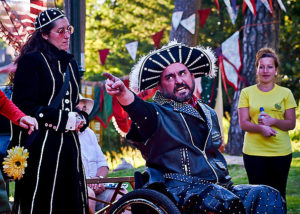
Increasingly, I have developed the sensory potential of the costumes, props and site dressing. These are rich in texture and detail which, whether an audience member or performer has a sensory disability or not, adds conceptual and experiential depth to the design. BSL interpreters and audio describers have roles in the production. I inform audio description from a design perspective and consider the sounds my costumes and props make in helping to define and identify a character. For Director, Elise Davison, and I, access is never an afterthought or an add-on, it is an integral part of the show. The creative potential is massive and enthralling – it enters my dreams at night!
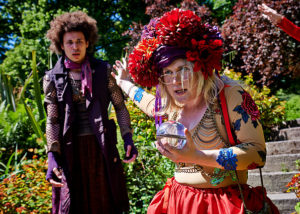
Taking Flight’s ‘Breaking Out of the Box’ symposiums bring theatre and access practitioners together to discuss the inherent challenges and creative developments. I cannot wait to explore creative captioning and audio description in ways informed by the works of Ramps on the Moon, Solar Bear and other interesting companies. I have been inspired to produce tactile pre-show boxes and models with advice from Robin Bray-Hurren from Graeae Theatre in addition to designing for touch tours. Being at the forefront of accessible and inclusive theatre, being part of a vital creative conversation, is a wonderful place to be making work.
And as if you aren’t already busy enough you are also a “current Senior Lecturer for the BA Creative and Therapeutic Arts, one of only two courses of its kind in the UK promoting the development of refined workshop facilitation techniques for inclusive and community benefiting creative interventions.” I wonder if you could tell us more about this role?
I was initially employed as a visiting lecturer, teaching art skills to students on the course. It was very different when I started in 2011, where students went out on placement, delivering art workshops only in education settings. I very quickly became Senior Lecturer and then Course Leader for 4 years and during this time, the course developed in a very exciting way. The placements and types of participants the students worked with opened up to incorporate elderly care homes, homeless charities, refugees and asylum seekers, women and children with experience of domestic abuse, people with disabilities of all ages, and the list keeps growing. This is to reflect the growing need for creative interventions, alternatives to the norm, to help participants grow, develop, connect with others and achieve a sense of wellbeing. The course incorporates placements every year, art studio practice as a prominent component, and supporting theoretical subjects such as Therapeutic Principles, Inclusive Practice, Human Development and many more. We feel that our students are very much at the forefront of this area of work, and they are supported by lecturers who are also engaged in current practice. I now enjoy lecturing on the course part-time, and my colleague Beth Pickard is Course Leader. Her vision continues to take the course from strength to strength.
Get the Chance works to support a diverse range of members of the public to access cultural provision Are you aware of any barriers to equality and diversity for either Welsh or Wales based artists or designers?
I am very fortunate that in my own work I am usually surrounded by theatre practitioners, artists and creatives in general who are exploring the potential of inclusive practice with great enthusiasm. The role of a set and costume designer naturally demands that you deliver something beautiful, engaging or striking within restricted and often short time frames, under pressure, within a budget and against the odds that come your way. It is therefore frustrating when access is not a part of the process from the beginning. It is difficult for a designer to ensure that the vision for the show is cohesively applied across the production if the access requirements are added on at the end. It should be a dramaturgical decision really. However, the reality is that this conversation regarding creative access is far from mainstream and is still a very new concept to some companies. Consequently, I feel it important to champion this in my work.
If you were able to fund an area of the arts in Wales what would this be and why?
I think the more research into creative access, the better. More funding will enable a rich exploration of potential methods and strategies to be adopted more universally.
What excites you about the arts in Wales?
The ability to regularly work bilingually in a prolific Welsh language arts scene.
What was the last really great thing that you experienced that you would like to share with our readers?
I went to see F.E.A.R. by Mr and Mrs Clark at Chapter Arts Centre. This was an intimate, one man performance that had me gripped the whole way through and anxious about everyday, life worries and getting older! It also had an accompanying film that operated as a collage of nostalgic footage and impending doom – signature Andrew James Rock!

FEAR by Mrs & Mrs Clark
Thanks for your time Becky
Designer Charlotte Neville on designing Jason and the Argonauts
Jason and the Argonauts Set Build Video One
Jason and the Argonauts Set Build Video Two
Charlotte Neville set and costume designer for Jason and the Argonauts gives us exclusive access to the set build process for the production. We were also lucky enough to see some of the amazing costume and mask designs for the show.
“We’ve drawn together a range of influences, from 1980s animation theme tunes and the soundtracks of Wes Anderson, to the fantasy films of Jim Henson, by way of the deck of the USS Enterprise and the Doctor’s TARDIS.”
The Set Model of the ship the Argo
A Golden Fleece mask during construction
Costume Designs
“Jason is an ordinary human in a world bursting with gods, monsters and superheroes. Assembling a team of mighty Argonauts, he takes the fabulous ship Argo on the ultimate adventure – the quest for the Golden Fleece. But it won’t be easy. Along the way, he’ll meet crazy Kings, horrific Harpies, sinister Sirens… and the skeleton army of the Earthborn Dead. Does Jason have what it takes to be a hero, and bring the Golden Fleece back home?
Jason & The Argonauts is a brand new version of the classic legend – a blockbuster theatre experience full of hope, heart and humour for the whole family. Suitable for everyone aged 7 and over.”
www.jasonandtheargonauts.co.uk
www.facebook.com/jasonandtheargonautswales
‘Must-See’ FREE exhibitions at RWCMD

If you have an interest in theatre or the visual arts there are a range of free exhibitions taking place at RWCMD right now!
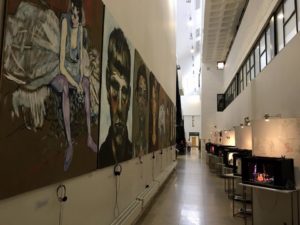
Gridding Up Exhibition
Tuesday 3 January – Tuesday 28 March
Painted in just four days, these works by our second year Design For Performance students and MA Scenic Art students are scaled up from small images using traditional methods of ‘gridding up’. A chance to admire their work off the stage as well as on, in the sets of our Richard Burton Company productions throughout the year. The exhibition also includes a sound installation by RWCMD Composer Naomi Wright, inspired by the artwork.
http://www.rwcmd.ac.uk/whats_on/events/gridding_up_exhibition.aspx
There is also an exhibition of set design models for Opera and costumes by BA2 & MA students.

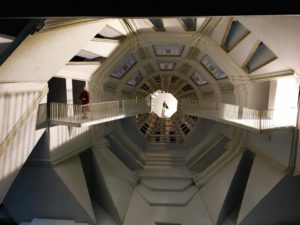
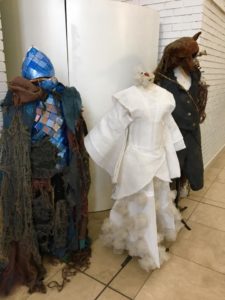
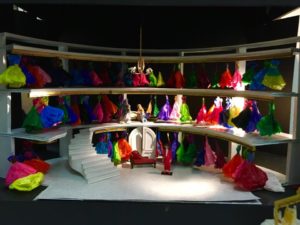
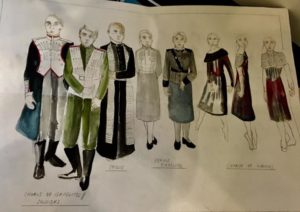
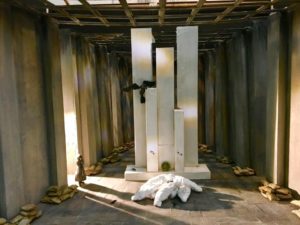
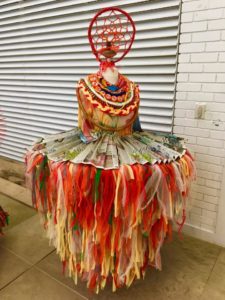
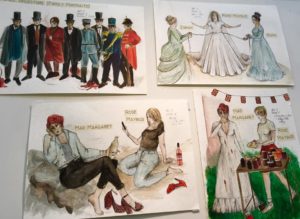

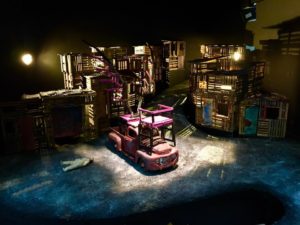
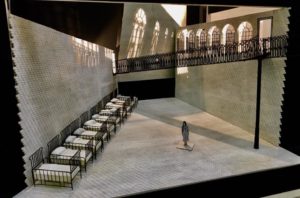
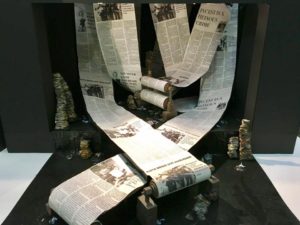
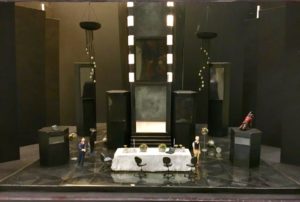
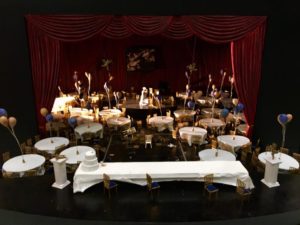
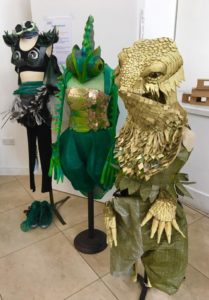
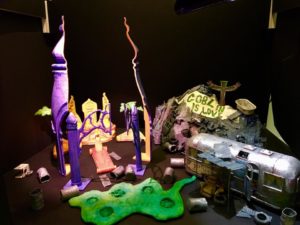
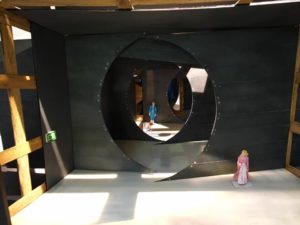
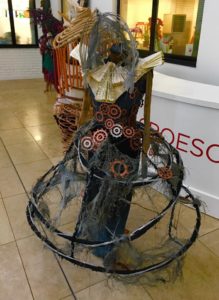
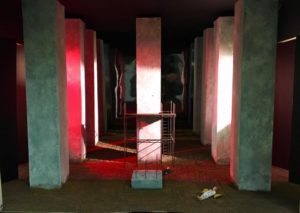
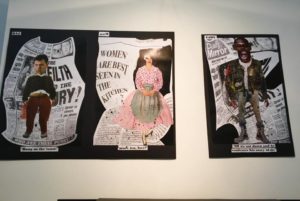
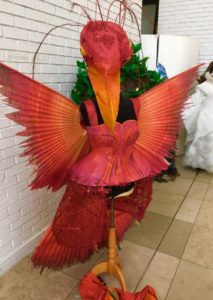

An Interview with playwright Tom Wentworth

Get the Chance values the role playwrights living and working in Wales bring to the cultural life of our nation. Here is our fourth interview in this series with playwright Tom Wentworth.
Hi Tom great to meet you, can you give our readers some background information on yourself please?
Hello! Great to be here. Thanks for asking me. I’m a playwright for theatre, radio and television who identifies as disabled. I am also the inaugural Chair of National Theatre Wales TEAM Panel and previously have been a script editor and produced radio for the BBC. As a writer, I am currently under commission to and developing projects with Graeae Theatre Company, Pentabus Theatre Company, National Theatre Wales and BBC radio. My latest play BEE HAPPY was performed at The Old Red Lion Theatre in London. Much of my work is concerned both directly and indirectly with diversity and inclusivity but mostly I am interesting in simply telling a good story and spending time with fascinating characters.
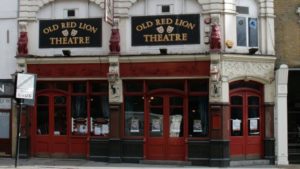
The Old Red Lion Theatre
Link to the Old Red Lion season announcement featuring Toms play
http://www.whatsonstage.com/london-theatre/news/old-red-lion-announce-autumn-season_41231.html
Link to Toms online biography
https://app.hiive.co.uk/profile/b213475a-2880-4923-90a9-185e324da489/#/
So what got you interested in the arts ?
It’s in my blood. My mum was a professional dancer touring in summer season and the much missed weekly rep and I was brought up on exciting stories of backstage antics. Our main family activity was going to the theatre (and still is!) I never considered that I wouldn’t write and studied radio at university because it is my favourite medium and I wanted to have extra skills but I have always written and occasionally performed which I hope to be doing in a new solo show later in the year if we get funding.
A great deal of your professional practice seeks to increase diversity across the sector. Is this something important to you?
It is greatly important and is both a blessing and a curse. I find it a very complex issue as an artist. For audiences on the one hand it is very simple – I firmly believe that we should all have equal access to theatre and live performance of all kinds. That’s why I believe so strongly in the work of Sherman 5 at Sherman Theatre.
http://www.shermantheatre.co.uk/sherman5/
However, as a writer it is very complex – on one hand my disability shouldn’t matter but on the other it drives my view of the world and therefore infuses my work (although not all of my work is about the disabled experience). It’s also incredibly useful for funding pots and being part of initiatives! I hope that doesn’t sound too mercenary but I think it’s important that artists acknowledge the things that commissioners and artistic directors are looking for which might give them an edge or be part of their USP. That’s not something that I’m totally comfortable with but I want to work!
In a wider context I am working all the time to increase diversity on our stages and screens with a particular interest in backstage roles right across the sector. Things are improving but we’ve still a very long way to go.
Get the Chance works to support a diverse range of members of the public to access cultural provision Are you aware of any barriers to equality and diversity for either Welsh or Wales based artists or specifically writers?
I think there are still several barriers – not all of which relate simply to equality or diversity. However the main one is the lack of accessible work. While most producing houses in Wales are doing well with providing performances for diverse audiences. For example I know the Sherman works really hard to put on captioned or relaxed performances but I would like to see more work done to make shows fully accessible throughout following in the footsteps of Graeae and Birds of Paradise (the latter of which toured Wendy Hoose to the Sherman Theatre and wowed audiences.) Their work builds access (captioning, BSL and audio description) into their work so that it’s fully integrated meaning that a disabled audience member can attend any performance rather than just the designated captioned show for example. I must acknowledge of course the great work that companies such as Hijinx, UCAN and Taking Flight do but we need to see this work on larger stages and in main houses.

Birds of Paradise and Random Accomplice, Wendy Hoose
The main problem is of course funding. Being disabled is a kind of ‘economic chaos’, we are at a point now where it is more expensive than ever to be disabled and access costs. This has to change, the culture has to change and there are lots of wonderful theatre makers such as Jonny Cotsen and Chloe Phillips who are striving to make a difference – and in a small way I hope that I am contributing too.

Chloe Phillips in a production by Taking Flight
Jonny Cotsen will be performing at this years Experimentica at Chapter Arts Centre.
Also, in Wales it increasingly feels that if you want your work performed then you must self produce. I know many brilliant practitioners who do this wonderfully and have made it a positive and rewarding part of their practice. However it is a time consuming and exhausting business and as a disabled person I have to be very aware of my small energy reserves so this not an option. I have tried my hand at producing and found it to be enjoyable but totally and utterly exhausting experience. I had to make a decision at that point that it would not be something that I could do if I didn’t want to spend a month in bed afterwards. So I prefer to work with brilliant people who do this much better than me. However this does mean that my work is currently very rarely produced in Wales and I spend most of my time on trains! I really hope that this will change. I’m not sure that any of these are specific to writers but to all theatre practitioners.
There are a range of organisations supporting Welsh and Wales based writers, I wonder if you feel the current support network and career opportunities feel ‘healthy’ to you?
I feel very lucky to have a healthy personal support network as a playwright in Wales but I am not sure that this is the case in the wider context. I share a co-working space with another playwright and have lots of friends who also write or make theatre so there is a great culture of supporting each other but in terms of formal support I don’t feel that that exists. I am lucky to be so involved with National Theatre Wales who continue to champion both me and my work. However most of my career opportunities have come from outside of Wales simply because there are more opportunities for production – and being brutal – bigger pots of money to fund this. It makes me sad that this is the case as I love living in Cardiff and after 8 and a half years of being here it feels like I am just beginning to find my feet.
If you were able to fund an area of the arts in Wales what would this be and why?
More productions of new writing and money to fund script development departments who can nurture writers. It’s very simple. We are fantastic in Wales at scratch nights, shorts nights, R&D but productions of new plays still feel comparatively thin on the ground. I must acknowledge of course that much good work is being done by companies like Dirty Protest but they have very limited resources. Also, NTW (and in particular Head of Development Simon Coates) is doing a marvellous job of helping him artists from all disciplines to develop their work and themselves as artists. Also Theatr Clywd are running residences for writers which is a fantastic resource. We need our producing houses and companies to be funded to be able to commission more work which will increase the diversity of writers on our stages. We also need to be training the next generation of Literary Managers who can support emerging talent and script development and build up a relationship with a writer over a long career, working collaboratively on several projects. This cannot happen without money – and development is expensive but it is vital if we want to keep writers working in Wales.
https://www.theatrclwyd.com/en/about-us/creative/writer-residence-scheme/

Simon Coates, Head of Creative Development, NTW
What excites you about the arts in Wales? What was the last really great thing that you experienced that you would like to share with our readers?
The amazing community of working, angry, hungry artists we have in this country who are prepared to put themselves and their work on the line to say the things that need to be said. That is a great reason for living here.
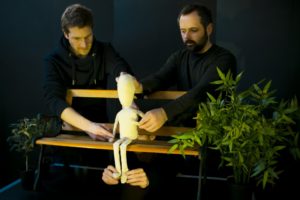
Meet Fred Hijinx Theatre
I loved Meet Fred and have seen it several times. It is such a powerful piece of work which really speaks about what it means to be disabled in 2017 and more importantly what it means to be human. Outside of Wales I recently saw Lost Without Words at the National Theatre in London which was produced by the marvellous Improbable Theatre Company who have been working with older actors (all highly experienced) teaching them to improvise. It is one of the most engaging, beautiful and laugh out loud pieces that I have seen for a very long time. I am really looking forward to Love Cardiff at the Sherman too.
Love Cardiff Sherman Theatre
http://www.shermantheatre.co.uk/performance/theatre/love-cardiff/
Also, the BBC Radio Drama department in Wales continues to produce over 50 hours a year of brilliant drama using writers and actors living and working in Wales from the most experienced hands to new voices. Daf James beautiful autobiographical play My Mother Taught Me How To Sing was one of the most moving and exciting pieces I’ve heard for a long time. Diverse, Welsh, political and yet intensely personal, which shows a bravery in this medium that I truly hope to see as an audience member commissioned for the stages of Wales.
http://www.bbc.co.uk/programmes/b08csqy4
Thanks for your time Tom
An Interview with Director Julia Thomas
Hi Julia great to meet you, can you give our readers some background information on yourself please?
I’m from Llanelli and have been working as a director for a few years now. I trained as an actor originally at Drama Centre London and this gave me a solid foundation in understanding how to work with actors and writers. My curiosity for directing was ignited when I went on a course with Living Pictures lead by Elen Bowman. As the week went on I found myself gravitating to the director’s side of the room and shuffled away from acting. I’m currently based at Leicester Curve and have been developing some new initiatives to build relationships with the local community and look after new writing and Writerslab. I’m about to direct a promenade production of A Clockwork Orange at Curve. Before arriving in Leicester, I was Resident director at the National Theatre Studio which was an incredible opportunity to be immersed in an environment dedicated to enabling the spark of an idea to be made into a theatrical form. I’ve been able to continue my relationship with the NT through being the Leicester gatherer on My Country, a Work in Progress and I am also a Director for NT Connections and will be co-ordinating the Festival in Aberystwyth next month.
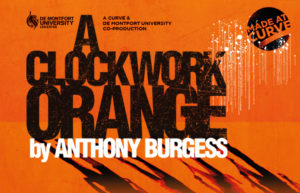
So what got you interested in the arts ?
When I was younger I spent a lot of time with my Grandmother who was always telling me stories and teaching me songs. We spent hours watching MGM musicals on the television and I loved imagining that I was Doris Day or Judy Garland. Coupled with the fact that my box of Lego was also at my Grandmother’s house, I had the ability to make anything with bricks that my imagination would allow and as I was very shy it was a real story telling haven. When I was ten I went to see my sister perform as King Herod in a brilliant show called ‘Follow the Star’ with Llanelli Youth Theatre. I was so bowled over that this was actually my older sister, she was hilarious and unrecognisable. I joined LYT for their next production which was Gypsy. I found lifelong friends and a love of theatre that brought me out of my shy shell and all of that story telling that had become a part of me finally had a place to be nurtured fully.
http://www.llanelliyouththeatre.co.uk
You are a theatre director can you explain how this role operates within the creative team on a production ?
My role as director is to bind every person and every element of the production together. Quite often you will hear the phrase ‘the director’s vision’ to describe the idea that the director thinks about what it should be and gets everyone on board to realise that. I think that it is more than vision, the director’s role is to think about the audience’s experience which must encapsulate all of the senses to be truly engaging. This can only be achieved through creative collaboration with the performers, composers, designers, producers, technicians and magicians (well in this instance!) My aim is to tell the story in the most exciting and dynamic way possible and to make the best use of the wonderful skills and talents of everyone around me.
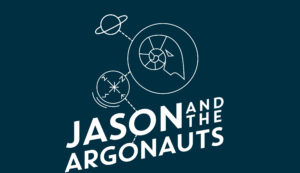
You are currently directing a brand new version of the classic legend Jason and the Argonauts. This sounds exciting! Can you please tell us more about your role on this production?
I started working on this brilliant play in January. I have wanted to work with Mark Williams (the writer) for some time as he has an amazing ability to write for families and takes epic stories and makes them feel current and fresh. Mark and I had two weeks in the Park and Dare Treorchy with actors, our designer Charlotte Neville, Composer Dan Lawrence, Illusionist Neil Henry and Fight Choreographer Sam Davies. At this stage my role was to try to solve some of the challenges of the play such as ships crashing, Skeletons coming to life and various articles exploding. The ideas generated in that time had me in fits of hysterical laughter and it was a really joyous and playful process. It culminated in a ‘toga ban’ which helped set the tone of the production. Everyone has been working away to prepare their element of the production and when we get back to rehearsals we will fuse all of these elements together.
Jason and the Argonauts sounds perfect for families who might enjoy films like Star Wars or Lord of the Rings. Do you think live theatre can compete when it comes to offering cultural experiences for audiences?
Absolutely. Because of our obsession with screens we are becoming more isolated. Theatre lets us share an experience as a community where we hear the laughter or gasps of amazement of others and feel that we belong. Jason is made for all of the family to enjoy, it isn’t a show for children that adults are made to suffer. There is genuinely something for everyone and to be able to share that across the generations will be thrilling. It’s good to get out too isn’t it?
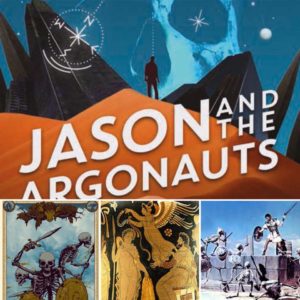
How are the classical stories of Jason and the Argonauts relevant to todays audiences?
Jason has to do the right thing in order to become the hero that he longs to be. He fails in his first attempt to get the fleece but gets a second chance and learns that power isn’t the most important driving force. I think that in the current climate of uncertainty globally, we need to be reassured that human beings can do good. We can be selfless and fight on behalf of those who are vulnerable and exploited. We look for unlikely heroes and long for adventure. Classical stories give us that in abundance. This version will be advocating the toga ban and so the characters will feel more contemporary.
Get the Chance works to support a diverse range of members of the public to access cultural provision Are you aware of any barriers to equality and diversity for either Welsh or Wales based artists?
I think that we are a country that should acknowledge the class barriers that have fuelled prejudice and disadvantage for centuries. We like to pretend that class doesn’t exist or that it has something to do with poverty. But just doing the odd project here and there isn’t going to stop this injustice. Self belief is the key to enabling people to achieve what they want to achieve and to live happy and fulfilling lives regardless of this no entry barrier. It is about a change of attitude and quashing of assumptions from those ‘in charge’ that will bring about social equality.
If you were able to fund an area of the arts in Wales what would this be and why?
I would fund Youth Theatres across the country so that within a 30 mile radius of every part of Wales a young person could participate for free in a company. Joining Llanelli Youth Theatre was a pivotal factor in the building of my self belief and I learnt so much about working with others, speaking up and having an opinion as well as working on productions (On and off stage). It was a training ground for life. It baffles me that funding for Youth Theatre isn’t a priority. Only those who can afford to pay for Stage Schools are getting this opportunity and that saddens and worries me.
What excites you about the arts in Wales? What was the last really great thing that you experienced that you would like to share with our readers?
I think what excites me the most is that National Theatre Wales established a Community of theatre makers and that not a week goes by when I don’t hear about this writer working with that film maker or that director working with a choreographer. The mix up of how people work together is exciting and unique to Wales. When I arrived in Leicester, I was like ‘where is everyone then?’ Being so used the tight knit arts community it became my mission to bring everyone together to forge collaborations.

Images for The Nether, Killology and How my Light is Spent.
Now that I’m back in Wales for a little while, Productions that I’m looking forward to are The Nether at Chapter (I saw the original production in London and I am keen to see how this can be done without the heavy use of digital technology). I’m also looking forward to How my Light is Spent and Killology at the Sherman. What a treat to have two new plays by Wales finest writers on in the next couple of months.
http://www.chapter.org/nether
http://www.shermantheatre.co.uk/performance/theatre/killology/
http://www.shermantheatre.co.uk/performance/theatre/how-my-light-is-spent/
Many thanks for your time Julia


